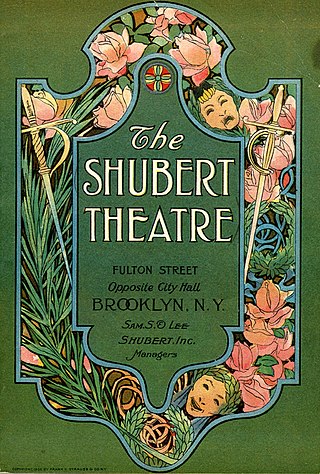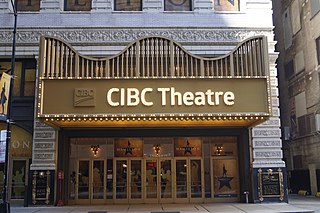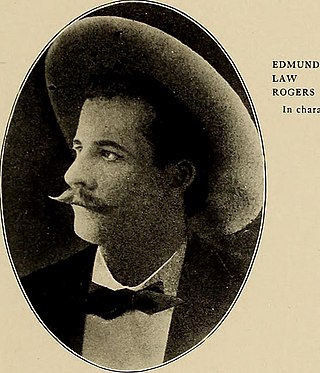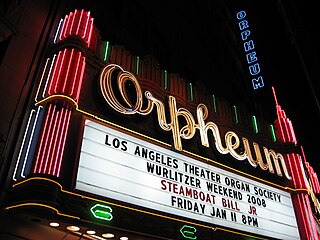
Louis Henry Sullivan was an American architect, and has been called a "father of skyscrapers" and "father of modernism." He was an influential architect of the Chicago School, a mentor to Frank Lloyd Wright, and an inspiration to the Chicago group of architects who have come to be known as the Prairie School. Along with Wright and Henry Hobson Richardson, Sullivan is one of "the recognized trinity of American architecture." The phrase "form follows function" is attributed to him, although the idea was theorised by Viollet le Duc who considered that structure and function in architecture should be the sole determinants of form. In 1944, Sullivan was the second architect to posthumously receive the AIA Gold Medal.

Dankmar Adler was a German-born American architect and civil engineer. He is best known for his fifteen-year partnership with Louis Sullivan, during which they designed influential skyscrapers that boldly addressed their steel skeleton through their exterior design: the Wainwright Building in St. Louis, Missouri (1891), the Chicago Stock Exchange Building (1894), and the Guaranty Building in Buffalo, New York (1896).

The Shubert Organization is a theatrical producing organization and a major owner of theatres based in Manhattan, New York City. It was founded by the three Shubert brothers in the late 19th century. They steadily expanded, owning many theaters in New York and across the United States. Since then it has gone through changes of ownership, but it is still a major theater chain.

C. W. & George L. Rapp, commonly known as Rapp & Rapp, was an American architectural firm famed for the design of movie palaces and other theatres. Active from 1906 to 1965 and based in Chicago, the office designed over 400 theatres, including the Chicago Theatre (1921), Bismarck Hotel and Theatre (1926) and Oriental Theater (1926) in Chicago, the Five Flags Center (1910) in Dubuque, Iowa and the Paramount Theatres in New York City (1926) and Aurora, Illinois (1931).

Samuel S. Shubert was an American producer and theatre owner/operator. He was the middle son in the Shubert family and was raised in Syracuse, New York.

Abraham Lincoln Erlanger was an American theatrical producer, director, designer, theater owner, and a leading figure of the Theatrical Syndicate.

CIBC Theatre is a performing arts theater located at 18 West Monroe Street in the Loop area of downtown Chicago. It is operated by Broadway In Chicago, part of the Nederlander Organization. Opened in 1906 as the Majestic Theatre, it currently seats 1,800 and for many years has presented Broadway shows. In its early years, the theater presented vaudeville celebrity acts.

Little Johnny Jones is a musical by George M. Cohan. The show introduced Cohan's tunes "Give My Regards to Broadway" and "The Yankee Doodle Boy." The "Yankee Doodle" character was inspired by real-life Hall of Fame jockey Tod Sloan.

Edmund Law Rogers, also known by the stage name Leslie Edmunds, was an American stage actor. He was also a founding father of the Kappa Sigma fraternity at the University of Virginia.

The Astor Theatre was located at 1537 Broadway, at West 45th Street in Times Square in New York City. It opened September 21, 1906, with Shakespeare's A Midsummer Night's Dream and continued to operate as a Broadway theatre until 1925. From 1925 until it closed in 1972, it was a first-run movie theater.

The Merle Reskin Theatre is a performing arts venue located in the Loop community area of Chicago, Illinois. Originally named the Blackstone Theatre it was built in 1910. Renamed the Merle Reskin Theatre in 1992, it is now part of DePaul University, and is also used for events and performances of other groups. It serves as the home of the Chicago Playworks for Families and Young Audiences series produced by The Theatre School of DePaul.
The Nederlander Organization, founded in 1912 by David T. Nederlander in Detroit, and currently based in New York City, is one of the largest operators of live theaters and music venues in the United States. Its first acquisition was a lease on the Detroit Opera House in 1912. The building was demolished in 1928. It later operated the Shubert Lafayette Theatre until its demolition in 1964 and the Riviera Theatre, both in Detroit. Since then, the organization has grown to include nine Broadway theaters, making it the second-largest owner of Broadway theaters after the Shubert Organization, and a number of theaters across the United States, including five large theaters in Chicago, plus three West End theatres in London.

George Michael Cohan was an American entertainer, playwright, composer, lyricist, actor, singer, dancer and theatrical producer.

Sam H. Harris was a Broadway producer and theater owner.

The Bronx Opera House is a former theater, part of the Subway Circuit, now converted into a boutique hotel in the Melrose neighborhood of the Bronx, New York City. It was designed by George M. Keister and built in 1913 at 436 East 149th Street on the site of Frederick Schnaufer's stable. It was one of several theaters to come into the area that became known as the Hub. It was formally dedicated on opening night Saturday, August 30, 1913.

The Orpheum Circuit was a chain of vaudeville and movie theaters. It was founded in 1886, and operated through 1927 when it was merged into the Keith-Albee-Orpheum corporation, ultimately becoming part of the Radio-Keith-Orpheum (RKO) corporation.

McVicker's Theater (1857–1984) was a playhouse in Chicago, Illinois, United States. Built for actor James Hubert McVicker, the theater was the leading stage for comedic plays in Chicago's early years. It often hosted performances by Edwin Booth, who married McVicker's daughter and was once targeted there in an attempted murder. Adler & Sullivan designed a remodel in 1883. Although destroyed in two fires, including the Great Chicago Fire, McVicker's remained an operating theater until 1984. It was demolished the next year.

George Hamlin was an American tenor, prominent on the concert stage as a lieder and oratorio singer and later in the opera house when he sang leading tenor roles with the Philadelphia-Chicago Grand Opera Company. He also recorded extensively on the Victor label.

The Sam H. Harris Theatre, originally the Candler Theatre, was a theater within the Candler Building, at 226 West 42nd Street, in the Theater District of Midtown Manhattan in New York City. Opened in 1914, the 1,200-seat theater was designed by Thomas W. Lamb and built for Asa Griggs Candler, who leased it to George M. Cohan, Sam H. Harris, and George Kleine. Although the theater was intended to host both movies and legitimate Broadway productions, it functioned exclusively as a movie theater after 1933. The theater's auditorium was demolished by 1998. The only remnant of the former theater is its 42nd Street facade, which has been used by the Madame Tussauds New York museum since 2000.


















